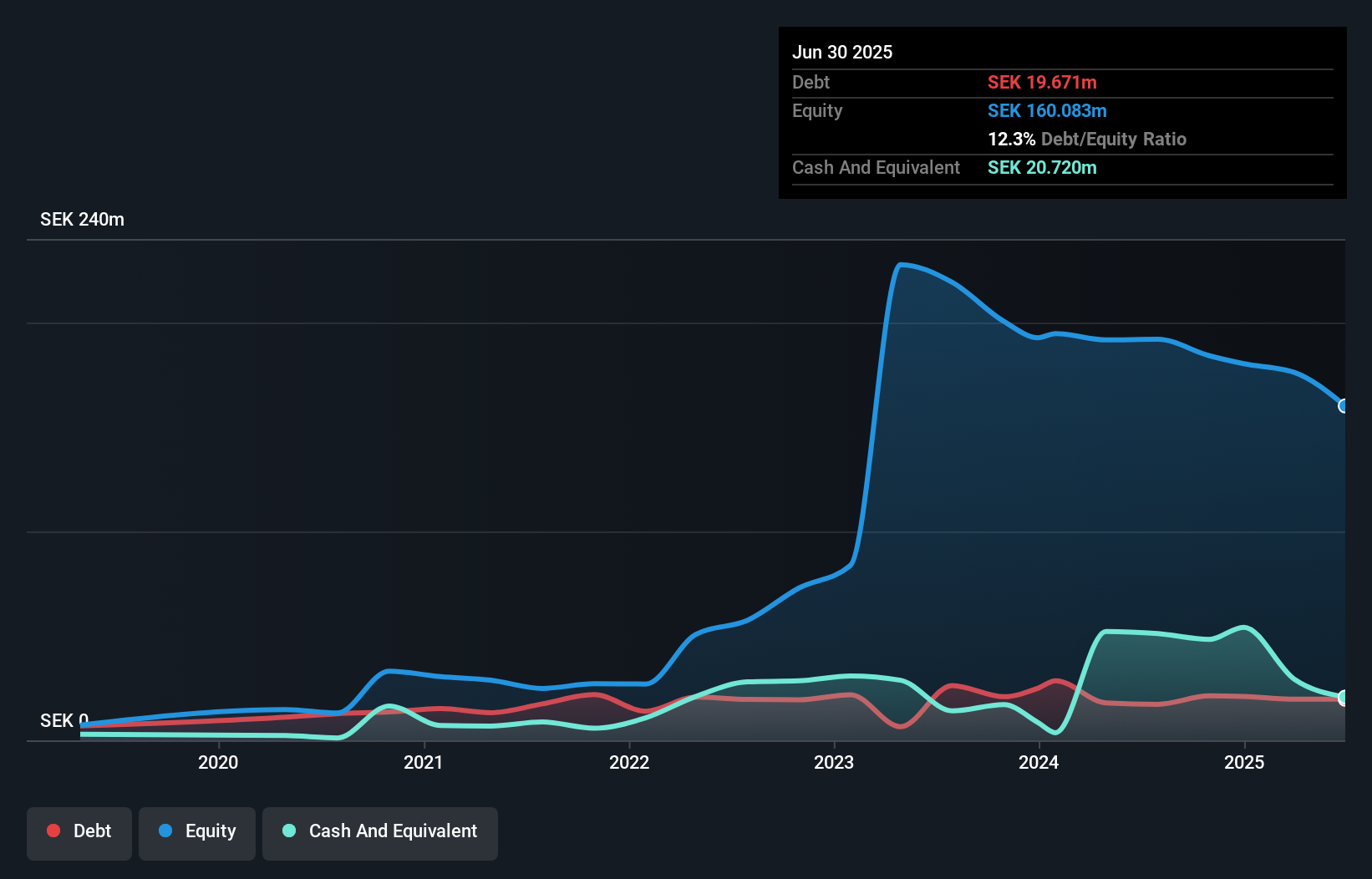Legendary fund manager Li Lu (who Charlie Munger backed) once said, 'The biggest investment risk is not the volatility of prices, but whether you will suffer a permanent loss of capital.' When we think about how risky a company is, we always like to look at its use of debt, since debt overload can lead to ruin. We note that ES Energy Save Holding AB (publ) (STO:ESGR B) does have debt on its balance sheet. But the real question is whether this debt is making the company risky.
When Is Debt A Problem?
Debt is a tool to help businesses grow, but if a business is incapable of paying off its lenders, then it exists at their mercy. Ultimately, if the company can't fulfill its legal obligations to repay debt, shareholders could walk away with nothing. However, a more frequent (but still costly) occurrence is where a company must issue shares at bargain-basement prices, permanently diluting shareholders, just to shore up its balance sheet. Of course, debt can be an important tool in businesses, particularly capital heavy businesses. The first thing to do when considering how much debt a business uses is to look at its cash and debt together.
How Much Debt Does ES Energy Save Holding Carry?
The image below, which you can click on for greater detail, shows that at June 2025 ES Energy Save Holding had debt of kr19.7m, up from kr17.2m in one year. But it also has kr20.7m in cash to offset that, meaning it has kr1.05m net cash.

How Healthy Is ES Energy Save Holding's Balance Sheet?
We can see from the most recent balance sheet that ES Energy Save Holding had liabilities of kr48.7m falling due within a year, and liabilities of kr4.38m due beyond that. On the other hand, it had cash of kr20.7m and kr16.5m worth of receivables due within a year. So it has liabilities totalling kr15.9m more than its cash and near-term receivables, combined.
Since publicly traded ES Energy Save Holding shares are worth a total of kr106.7m, it seems unlikely that this level of liabilities would be a major threat. However, we do think it is worth keeping an eye on its balance sheet strength, as it may change over time. Despite its noteworthy liabilities, ES Energy Save Holding boasts net cash, so it's fair to say it does not have a heavy debt load! The balance sheet is clearly the area to focus on when you are analysing debt. But it is future earnings, more than anything, that will determine ES Energy Save Holding's ability to maintain a healthy balance sheet going forward. So if you want to see what the professionals think, you might find this free report on analyst profit forecasts to be interesting.
See our latest analysis for ES Energy Save Holding
Over 12 months, ES Energy Save Holding made a loss at the EBIT level, and saw its revenue drop to kr178m, which is a fall of 18%. That's not what we would hope to see.
So How Risky Is ES Energy Save Holding?
While ES Energy Save Holding lost money on an earnings before interest and tax (EBIT) level, it actually generated positive free cash flow kr11k. So taking that on face value, and considering the net cash situation, we don't think that the stock is too risky in the near term. With revenue growth uninspiring, we'd really need to see some positive EBIT before mustering much enthusiasm for this business. The balance sheet is clearly the area to focus on when you are analysing debt. However, not all investment risk resides within the balance sheet - far from it. For instance, we've identified 1 warning sign for ES Energy Save Holding that you should be aware of.
If you're interested in investing in businesses that can grow profits without the burden of debt, then check out this free list of growing businesses that have net cash on the balance sheet.
Valuation is complex, but we're here to simplify it.
Discover if ES Energy Save Holding might be undervalued or overvalued with our detailed analysis, featuring fair value estimates, potential risks, dividends, insider trades, and its financial condition.
Access Free AnalysisHave feedback on this article? Concerned about the content? Get in touch with us directly. Alternatively, email editorial-team (at) simplywallst.com.
This article by Simply Wall St is general in nature. We provide commentary based on historical data and analyst forecasts only using an unbiased methodology and our articles are not intended to be financial advice. It does not constitute a recommendation to buy or sell any stock, and does not take account of your objectives, or your financial situation. We aim to bring you long-term focused analysis driven by fundamental data. Note that our analysis may not factor in the latest price-sensitive company announcements or qualitative material. Simply Wall St has no position in any stocks mentioned.
About OM:ESGR B
Flawless balance sheet and good value.
Market Insights
Community Narratives




